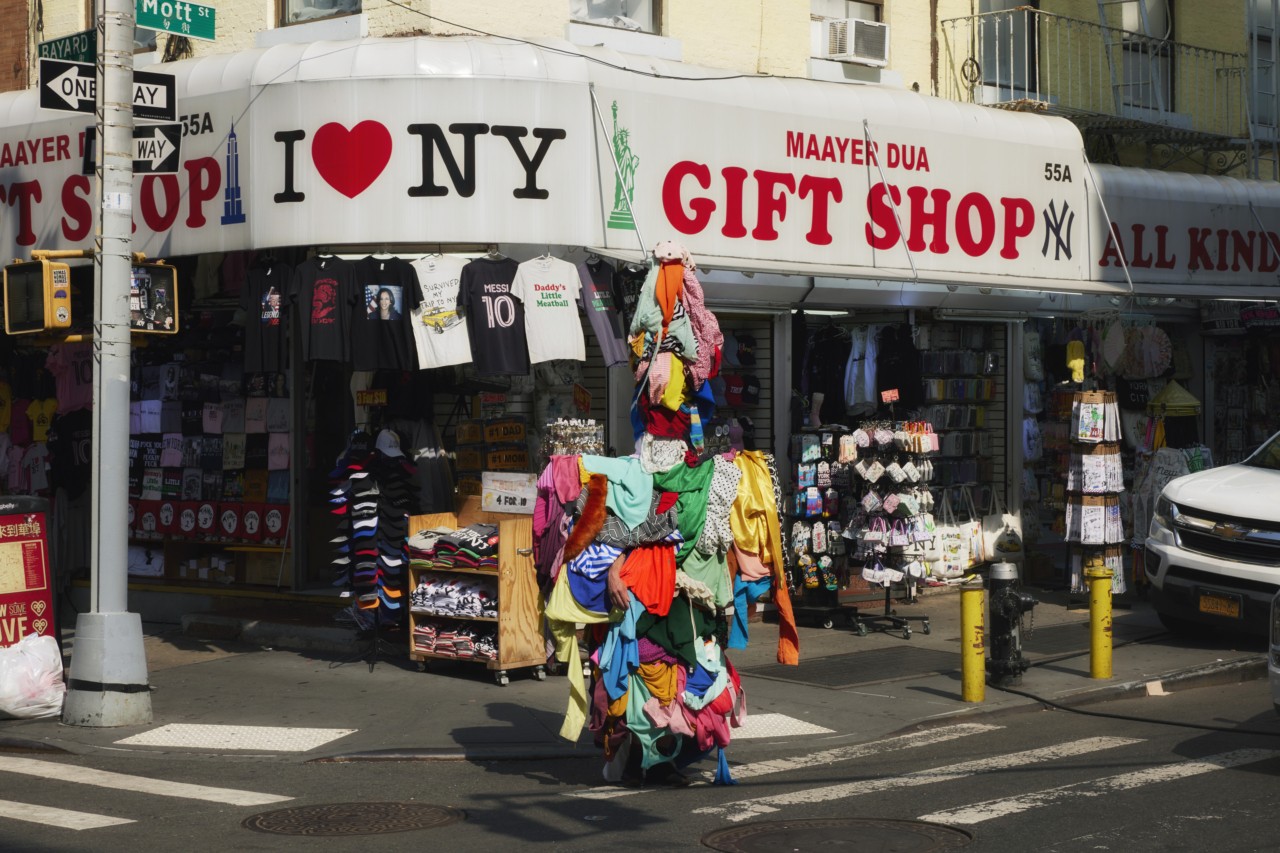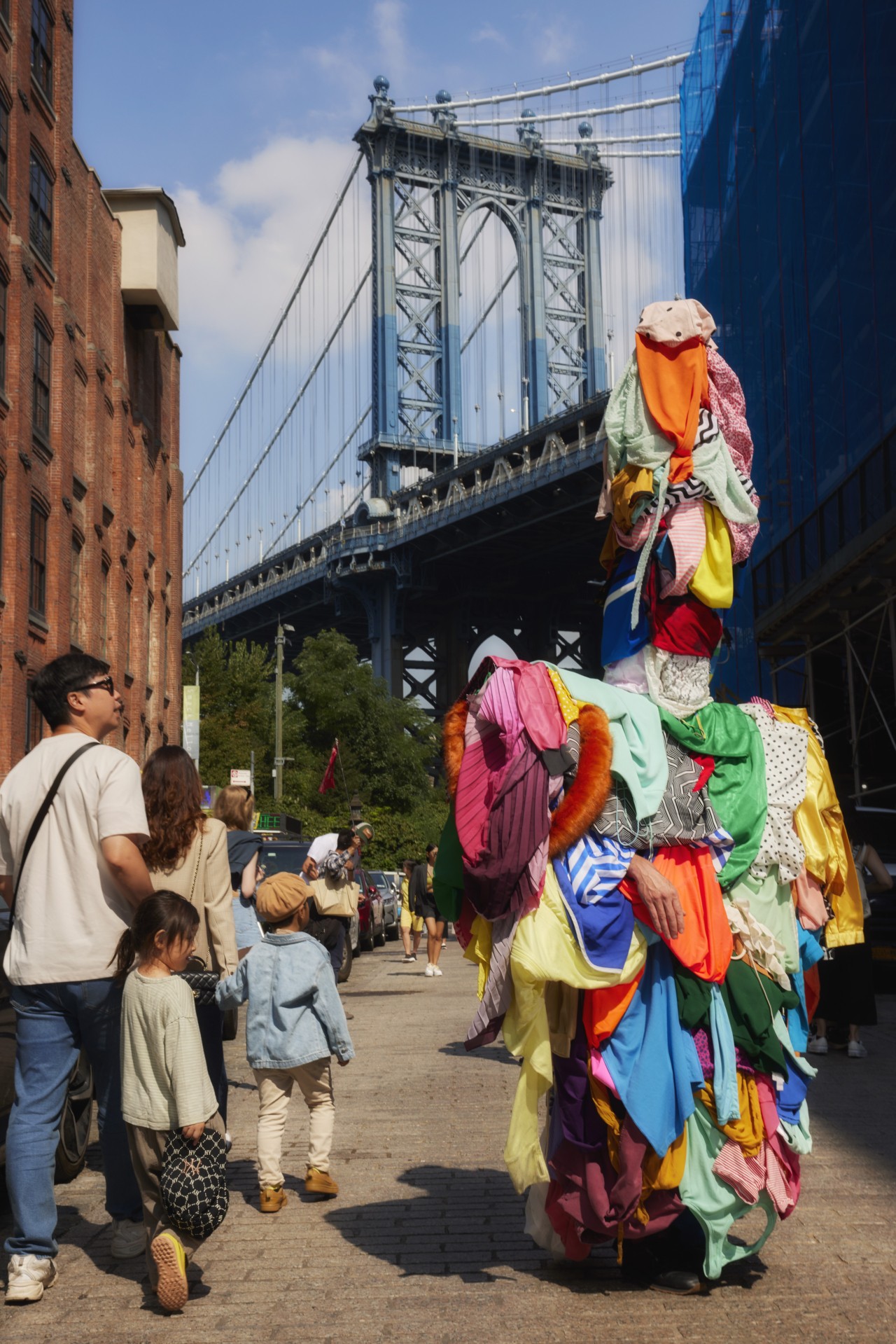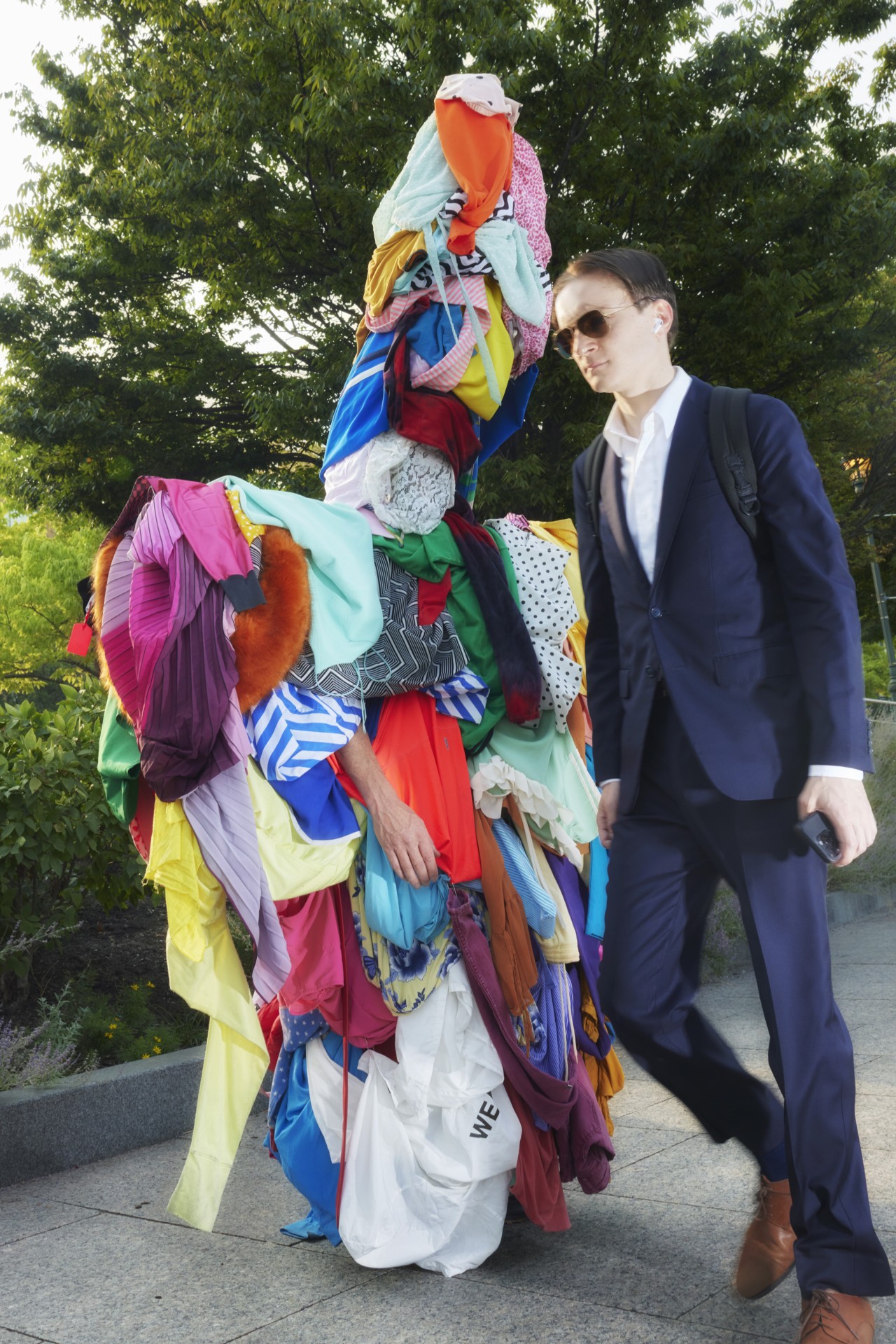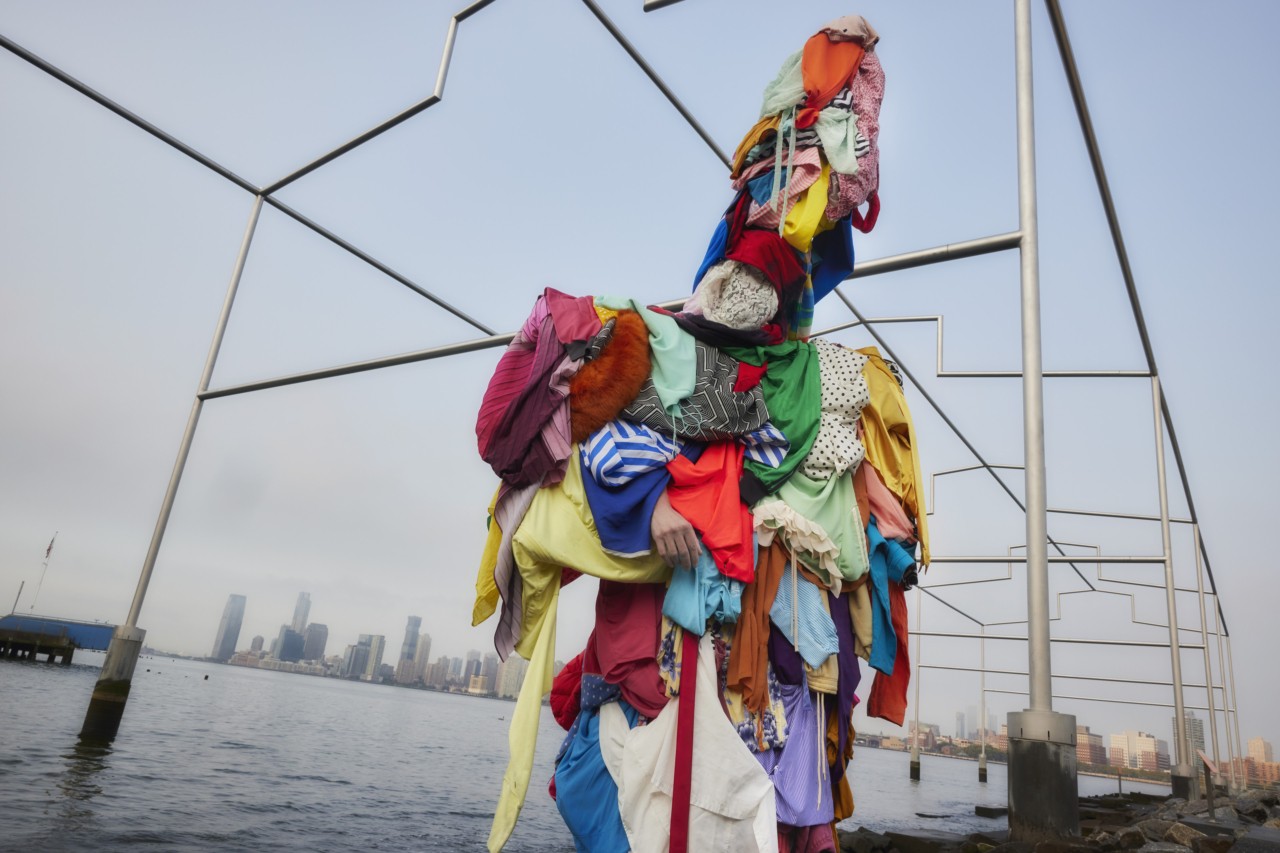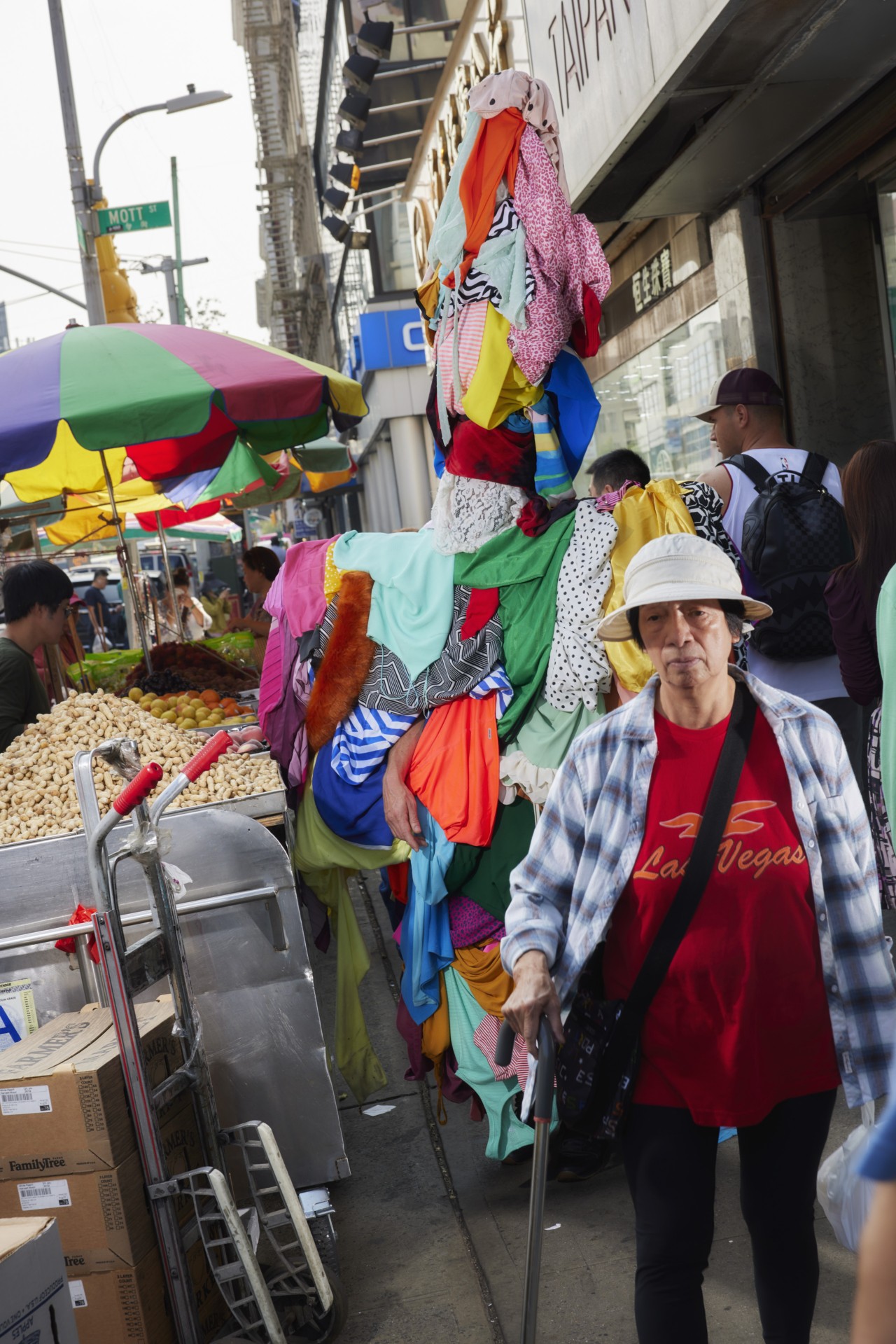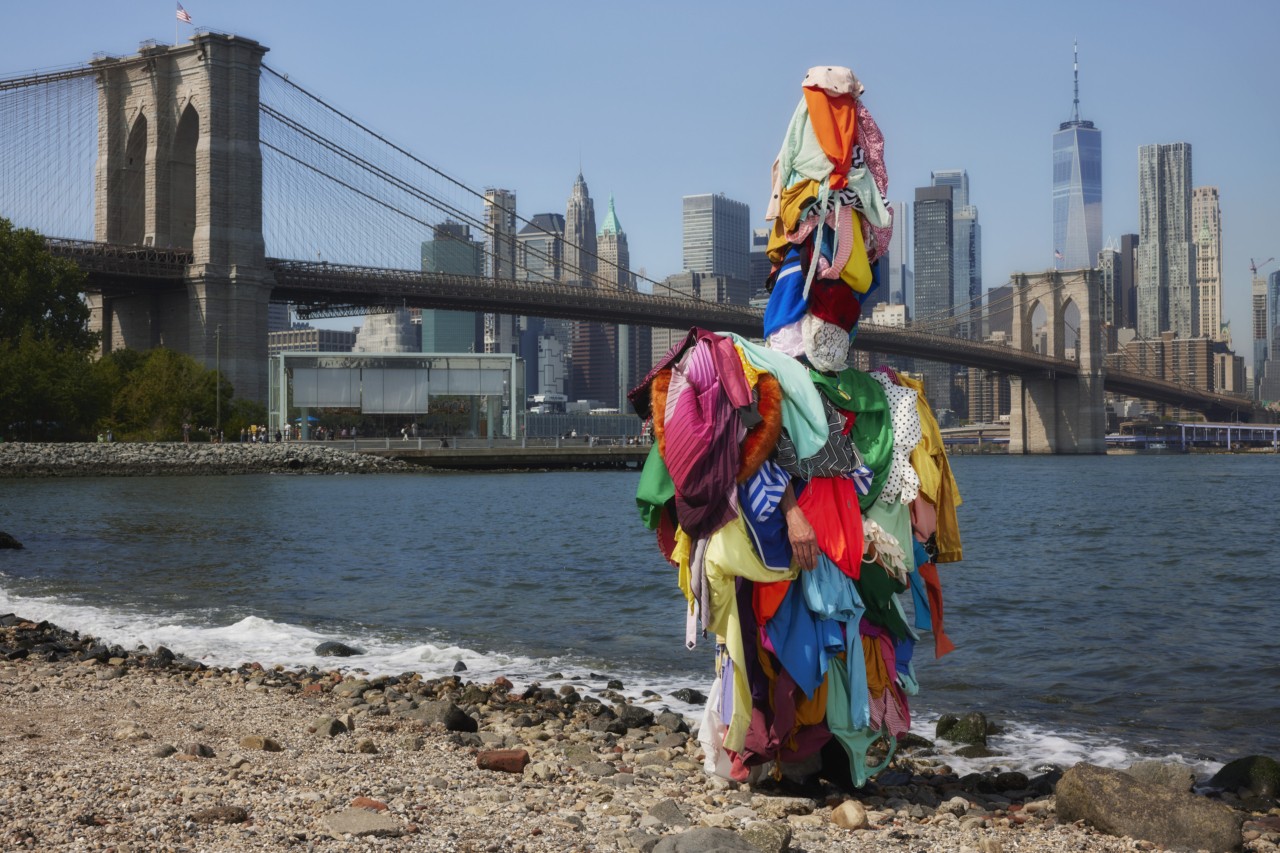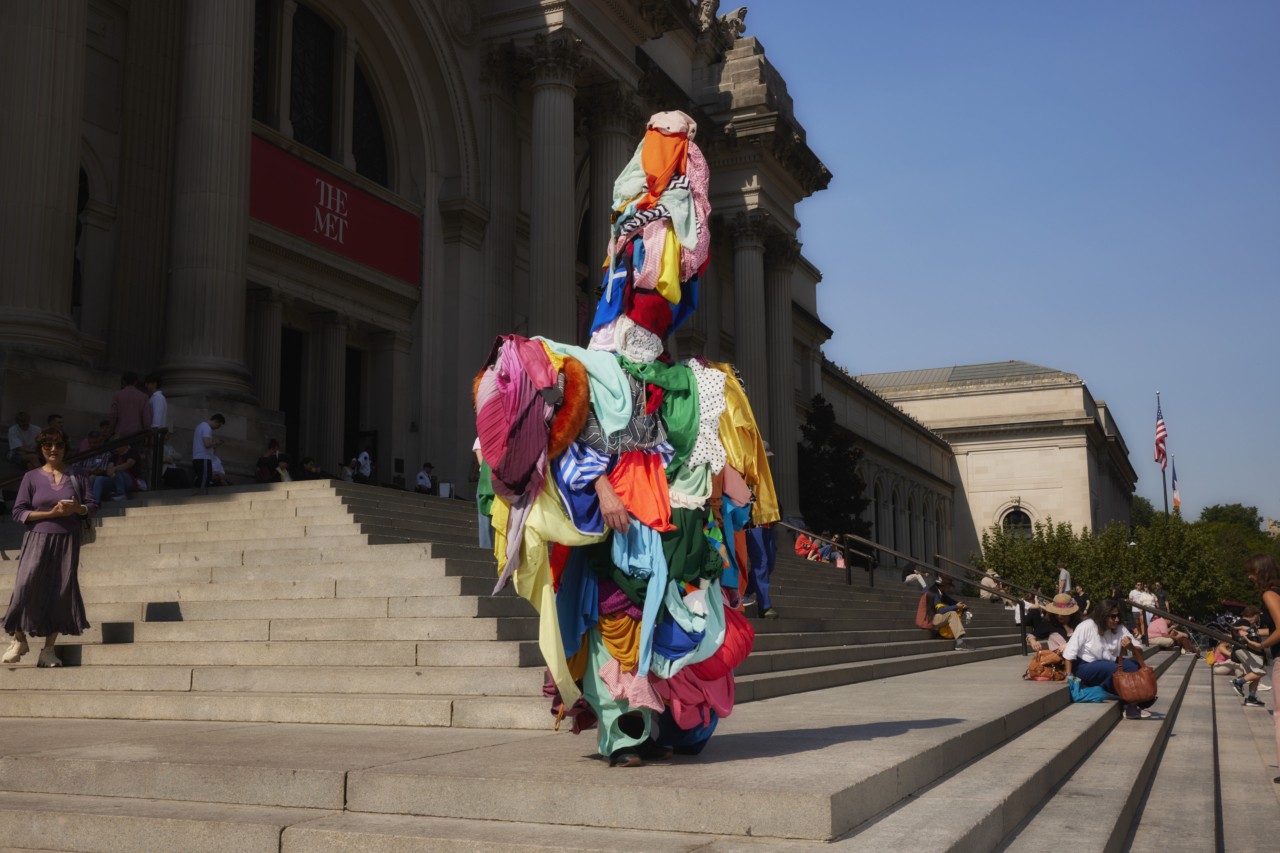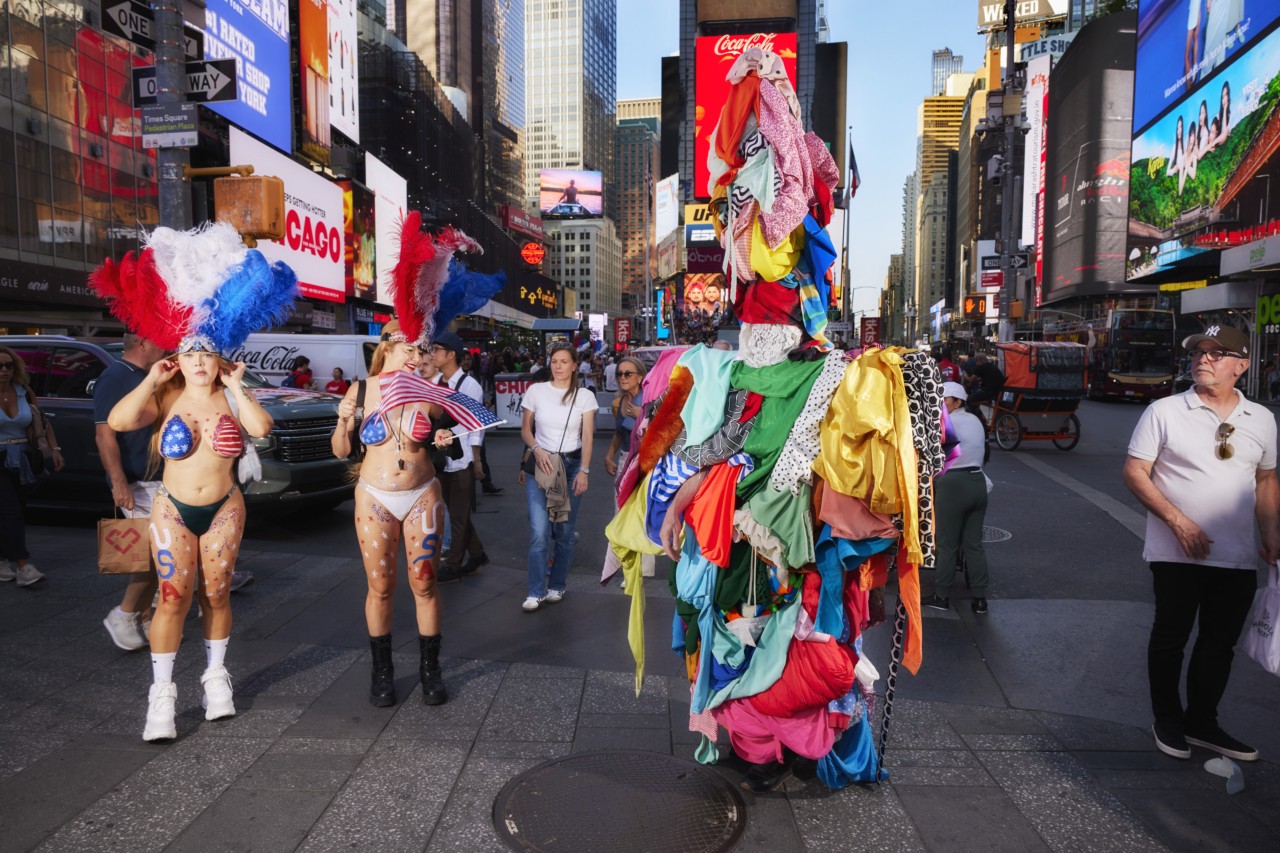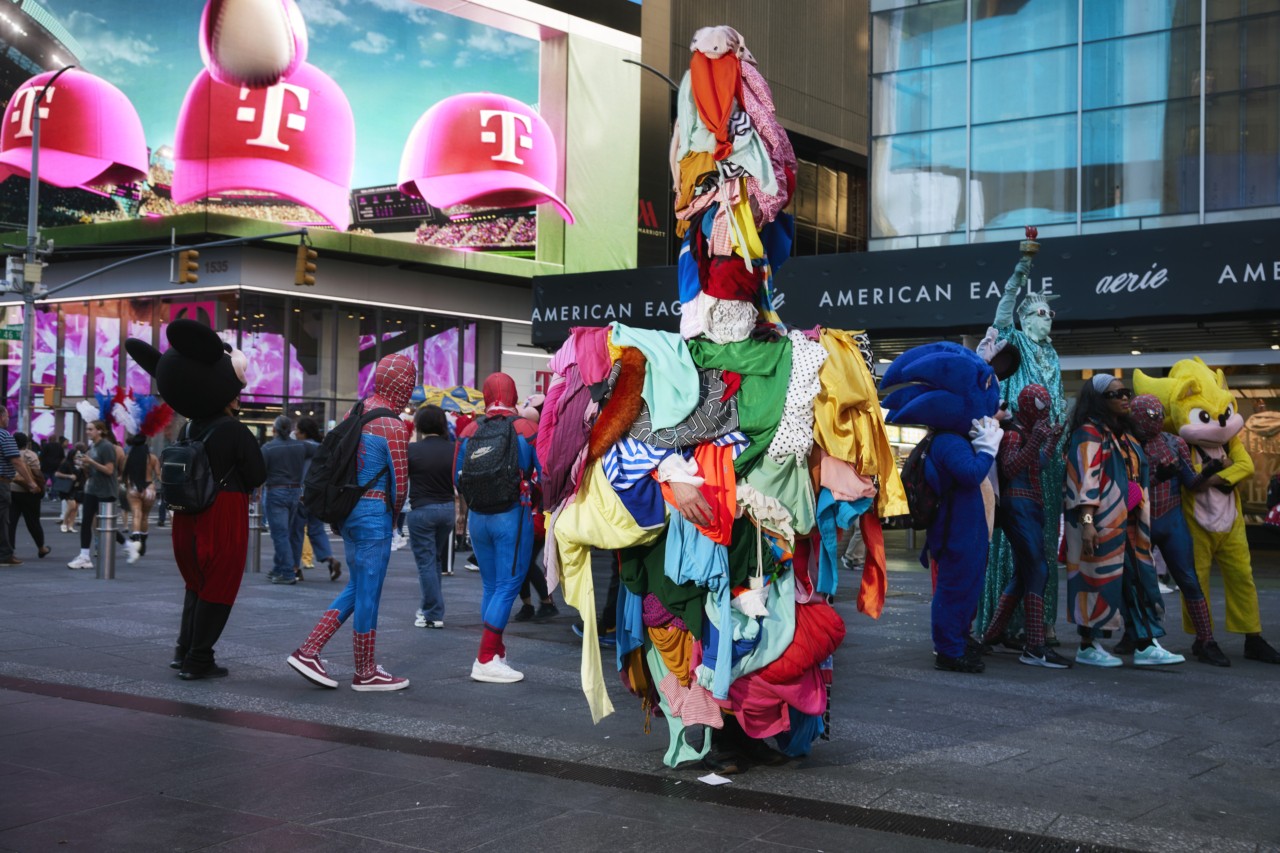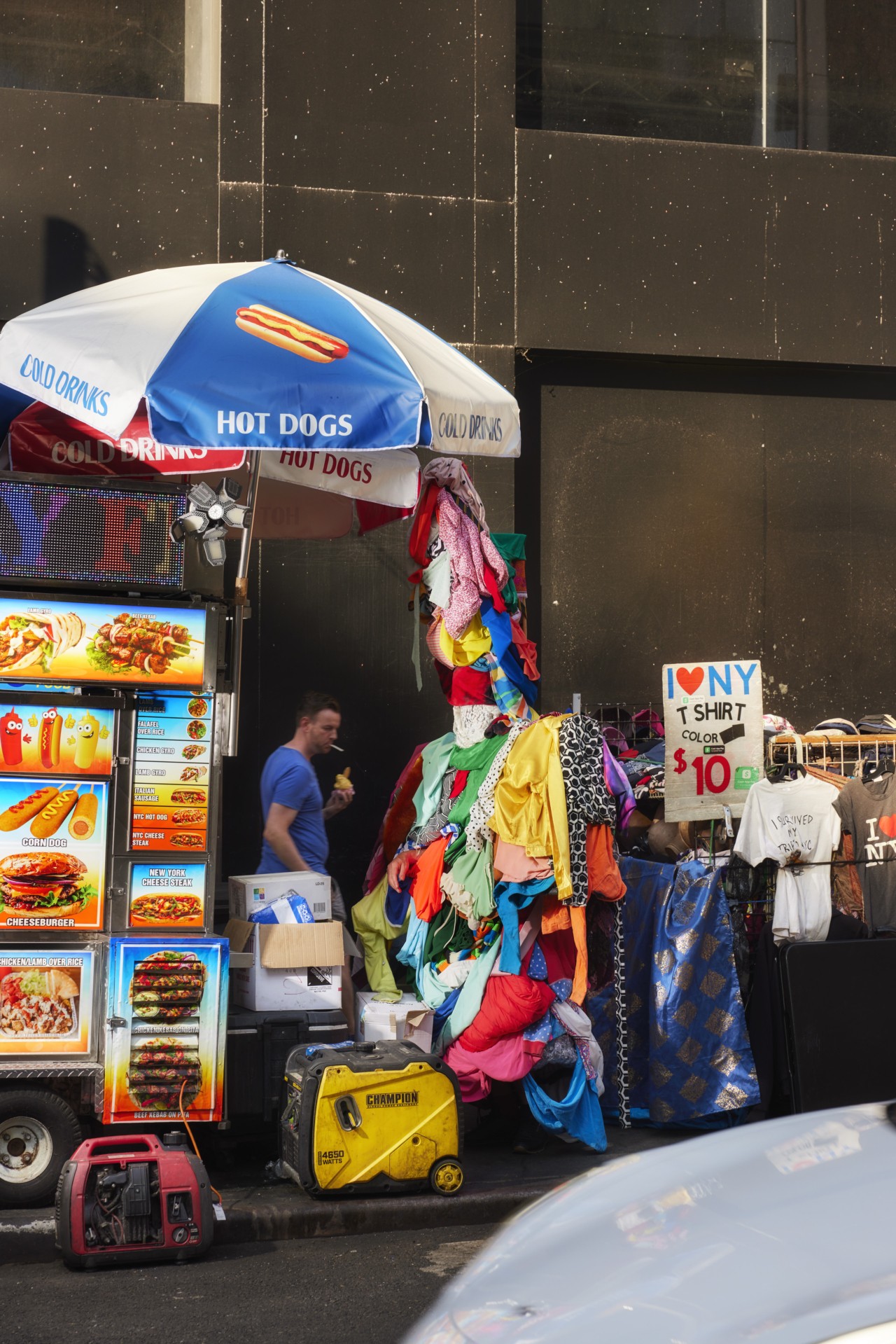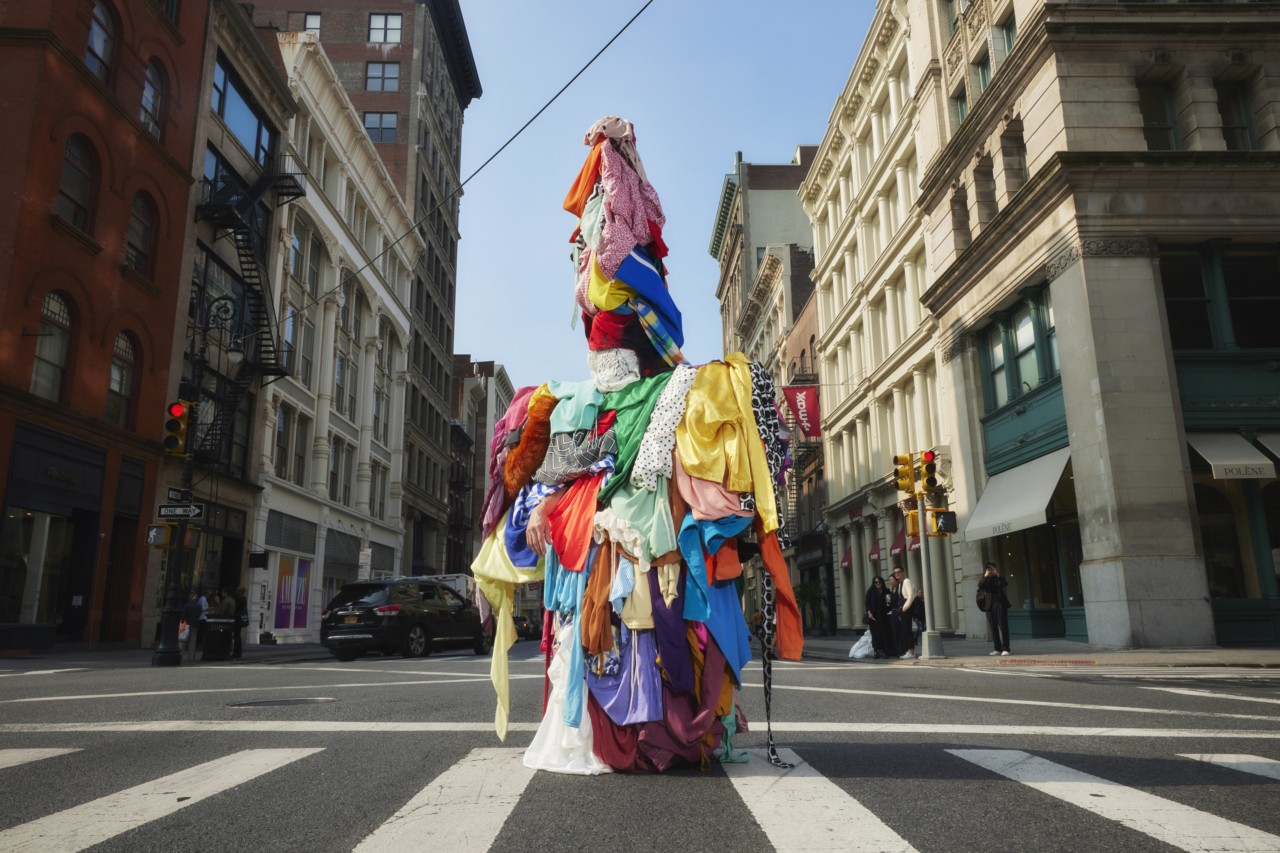

Words by Liz Ricketts
Photographs by Charlie Engman
“I would like to come and experience the waste for myself” is among the top 10 phrases I hear over Zoom on a weekly basis as the executive director of not-for-profit The Or Foundation.
The location inspiring this pilgrimage is Ghana, and the waste in question is textile waste. Paradoxically, the textile waste on the beaches here in Accra originates in the locations where the people on the other side of the Zoom screen are living, places like New York City, where residents throw away 200,000 tons of clothing and other textiles every year, or London, where residents discarded 157,300 tons of clothing, or an average of 44 items per person, in 2019. Of this massive amount of discarded waste, what ends up in Accra is but a fraction. Why travel to Ghana if more of the waste they seek is in their own backyard, in the landfills, charity shops, and closets of their home countries?
The Global North’s extreme excess goes unfelt and unnoticed because it passes citizens by in tidy little logistical units—containers, boxes, and bags—making the excess feel clean and modern. In Amsterdam, among other European cities, small trash cans on the street sit atop dumpster-size receptacles hidden underground, playing tricks with our perception of how much we throw away. It’s literally out of sight out of mind.
But here in Accra, those tidy units burst open and the guts of the Global North’s gluttony are exposed to the elements, to the hand, to the eye, and to the nose. In Kantamanto, the world’s largest resale and upcycling market, this takes the form of 120 pound bales full of secondhand garments—containing anywhere from 40 items in a men’s suiting bale to 1,000 items in a childrenswear bale—that have been compressed to form the logistical unit that is necessary to optimize profits for the exporter and the importer.
These units are unloaded from shipping containers every Thursday on the importers’ side of Kantamanto before being purchased by retailers who hope to resell the items inside, despite being unable to see or touch the products before purchase. When retailers open these bales on Wednesdays and Saturdays, the bale straps are cut and the clothing immediately expands as if gasping for air. The plastic is removed, and the retailers begin sorting the clothing into piles based on quality.

As each item of clothing is peeled away from the bale and adjusts to being a three dimensional object once again, the piles take up more and more space until you could never conceive of everything that came out of that logistical unit being squeezed back inside again. The piles fill the space. Piles are everywhere: People sit on piles, walk on piles, piles fly in front of your face as they are tossed across the aisle of the market or are transported in bowls atop women’s heads.
Kantamanto is not tidy; it is raw. The excess is not only visible; it is felt. The piles take up the limited space that a retailer has in her stall. The weight bears down on the women who carry the bales on their heads, crushing their spines, and every item of clothing is handled by retailers, cleaners, dyers, repairers, upcyclers, and waste pickers. The clothing that cannot be sold leaves the market as waste, and because Accra does not have the trucks nor a sanitary landfill nor an incinerator, this waste ends up in places where it does not belong: burn piles, open dumpsites, the beach.
Kantamanto makes the excess of the Global North visible, and it is this waste—their waste made real on a distant shore—that the people on the other side of the screen want to experience for themselves. I am at once repulsed by the emergence of such disaster tourism and our organization’s role in making the destination appealing in some way while also understanding perfectly why the person on the other side seeks clarity, why they want to put their hands on something three dimensional, why they yearn to get a grip.
I begin here not to shame anyone, but so as to ground us in the reality of the two worlds between which waste is traded.
Yet the frequency of inquiries from Global Northerners on the hunt for an encounter with real waste is the least hysterical part of my job. As someone at the center of what has become an absurd debate over what waste is and is not, I would like to share some of the perplexing juxtapositions arising from what can only be described as the rotting of common sense.
This week I was told, over another Zoom call, that clothing charities in the Global North don’t believe that clothing is washing up on Accra’s beaches and that stories about clothing waste on Accra’s beaches are now considered propaganda within the exporter community—a note meant to caution me.


Five days earlier, our team removed over 11 tons of textiles and other plastic waste from a 160-foot stretch of coastline here in Accra, collecting 1,184 clothing tags in under two hours.
The beach was devastating that day. As the tide came in, we were able to walk into the water, put our hands down, and pull up fistfuls of clothing. I looked up and saw a colleague standing on a mound of textile waste, just staring out at the horizon in a sort of daze. Around me, colleagues were chopping tentacles (tangled masses of clothing that can measure over 30 feet in length) with machetes, while others hoisted dripping bags of textile waste onto their heads as sand flew and contaminated water dripped into their eyes and mouths. Still more colleagues had their phones out to document the tags we found, knowing that the Global North wants to see the data, the stats, the research to prove that the clothing I could feel floating around my ankles was real.
When I asked my colleague Edwin Dzobo how he knows that waste is real, he said, “I have pulled mounds and heaps of textile waste from the beachfront every month. It feels gross to clean up. It feels harrowing because of the volume and to see how much waste returns on the same day after each cleanup.”
Today is Sunday, the day of the week when my WhatsApp blows up with hundreds of text messages from our beach monitoring crew, each scanning a section of Accra’s coastline for new textile tentacles, measuring them and taking photos of any new tags. They have reported their findings over WhatsApp every Sunday for over two years.
And still, the Global North is seemingly not satisfied with any proof that they did not collect themselves, on their terms, with their methodology—never mind if the studies being conducted by people who do not live in Ghana are far less rigorous, taking place over the span of a two-week trip instead of over two years of living the data. Because those who have historically profited from the recommodification of waste seem dead set on denying that the clothing bales they sold to Kantamanto retailers have an afterlife that plays out once that bale is opened—beyond the control of Global Northerners and with no allegiance to the simple and clean narrative that they present.

Their narrative uses the word “recycling” to sweep the complicated reality of the global secondhand economy out of sight and out of mind, neutralizing waste and pacifying guilt that the donating citizenry may feel when confronting the trash bags of excess in their closets. In store take-back programs, the clothing bins located in shopping mall parking lots, and curbside collection companies like Simple Recycling, all present the false narrative that textile “recycling” is abundant and easy. In reality, much of the clothing that passes through these systems will not be “recycled” but rather will be sold to the export market, where it may very well end up here, on the beach in Accra.
In recent months, the Textile Recycling Association, which represents 75% of the U.K.’s used textiles collectors and sorters, issued a press statement “sounding the alarm about the imminent collapse of the textile recycling sector due to global market challenges.” (The term recycling is a misnomer given that the bulk of their business is sorting for the export resale market, not recycling clothing into new clothing.) At the same time, it touted a report suggesting Ghana’s secondhand economy is thriving because traders earn USD $40-75 per month. That’s below the global poverty line. It baffles me how Global North exporters who are now struggling because their supply is chock full of low-value fast fashion fail to understand that markets like Kantamanto, which have been on the receiving end of the lower valued items for decades—the items that were considered too low value to be profitable in Global North thrift stores—are also at risk of collapsing.
In a world of $2 T-shirts and $10 jeans, one Global North man’s trash is no longer another Global South man’s treasure. It’s just trash tossed around the world until it hits the ground. A business model that gets consumers addicted to excessive amounts of stylistically homogeneous clothing that is trendy but quickly depreciates in real value—clothing that lacks the embedded value that once made clothing worth keeping, repairing, reselling, upcycling, or recycling—that’s a business model that consolidates profits in the pockets of a few businessmen, leaving us to clean up their mess.
This is why I am even more perplexed by the fact that Global North exporters—a group of people who should eagerly support Kantamanto in calling for an end to this volume over value business model that is chipping away at their profit margin—have chosen to deny that much of the clothing Kantamanto retailers purchase goes unsold and leaves the market as waste. Instead of joining forces to tackle the root of the issue, some exporters are lobbying their governments for financial support to improve sorting, claiming that with more technology and more money, they can ensure that no clothing ends up on Accra’s beaches.

But the problem is not sorting. The bales opened in Kantamanto have already been sorted in the Global North. The problem is the quality of the product that is being sorted. Fast fashion has lowered the quality of clothing overall, leading the entire global secondhand supply chain—from Goodwill and ThredUp to Kantamanto—fighting over feedstock, because the costs of doing business are so much higher than the value of the material that is available to be sorted.
Sorting alone does not manufacture better quality clothing and materials. Instead of acknowledging this and working together to tackle the root issue of the overproduction of low-quality clothing, Global North exporters continue to champion a narrative that suggests clothing waste ceases to be waste as soon as someone from the Global North has sorted it as reusable, a narrative that reinforces a colonial ideology that the Global North has everything under control.
This narrative is a lie. Because no matter how well clothing is sorted, the fate of every garment inside of that bale will be determined in a receiving market like Kantamanto, far from the place where it was sorted, without a return policy and without the funding to control where unsold products end up.
It’s odd to have something you feel so tangibly referred to as “propaganda.” I have asthma, our team is sick more often than they should be, a “running stomach” and black snot are daily norms. Beach cleanups are not only spiritually draining, as my colleagues find themselves wondering if we can ever make a difference; these events are also physically exhausting and bad for participants’ health, given that the clothing tentacles are often drenched with human sewage and industrial byproducts.

Our collection of air monitors doesn’t offer much comfort. The monitor at our main office averages an Air Quality Index (AQI) measurement of 115, the monitor we installed at Kantamanto averages 125, and the air monitor at our recycling space on the western edge of Kantamanto averages 122. In Ghana, air pollution is the second leading risk factor for early death. According to a study conducted by the Institute for Health Metrics and Evaluation (IHME), 13.2% of deaths in Ghana can be attributed to air pollution.
Compare that to the U.K., the largest exporter of secondhand clothing to Ghana, where 2.4% of deaths are attributed to air pollution, or the U.S., the largest exporter of secondhand clothing globally, where 2% of deaths are attributed to air pollution. The air pollution in Accra is the result of many factors, including waste generation and the trade of “African quality” fuel exported from Europe with sulfur up to 378 times higher than levels permitted in Europe. Our team walks past burning piles of clothing and packaging every day in the market. The taste of burning plastic is part of the job.
Our Ecological Research and Remediation department has been researching microfiber pollution for over two years. This includes analyzing spit and urine samples from retailers working in Kantamanto. These samples showed such high levels of microfiber pollution that we asked retailers to resubmit the samples, thinking that the original levels couldn’t possibly be right. The second set was the same.
Kantamanto retailers express increasing concern about the health implications of doing their jobs, listing air pollution and disease due to poor sanitation as some of their top concerns next to debt and the deteriorating quality of clothing.

In a world of $2 T-shirts and $10 jeans, one Global North man’s trash is no longer another Global South man’s treasure.
Being the cofounder and director of The Or Foundation, I wrestle with the choice I am asking our team to make to put themselves and their health at risk to keep gathering the data that we hope might someday convince brands and governments to take action. This is the concern that most keeps me up at night. While I know that my colleagues are committed to the mission and dedicated to the communities we serve, it is still a risk for our team of 55 people to place themselves at the center of the crisis.
Whereas many people living in Accra experience the health implications of air pollution but remain unaware of the severity of the issue, our team is digesting real-time data, and there is a psychological toll that comes with becoming hyper aware and not being able to do much about it. In addition to offering more regular health screenings for our team, we recently launched our Kantamanto Health Outreach program, which offers health screenings and wellness tools to Kantamanto retailers and tailors. This is in addition to the healthcare program we have built for women formerly working as kayayei, a job that requires young girls to head-carry 120 pound bales of secondhand clothing, often resulting in irreversible spinal deterioration and even death.
It’s also odd to have something so seemingly obvious—the existence of the waste we and our communities deal with every day—called into question. When I asked my colleague Nutifafa Mensah how she knows that waste is real, she laughed and said, “If we create that many garments, there will always be waste. Watch the commercials created by the fashion brands: Every day there is a new release of a garment or a style or the same style in different colors. Who is keeping those things in their house?” Another colleague, Eugene Ewusi-Annan added, “Think about it introspectively: How much I am just not using? And think about how that is actually a problem if billions of people are doing the same in their own closets.”
While I spend my time explaining to people across the ocean how we know that the waste on Accra’s beaches is real, an act of diplomacy that leaves me mentally drained, I am also watching the aestheticization of textile waste play out across the Global North internet. With the rise of the circular textiles economy, which remains a nobly ambitious idea more than it is a reality, projections of waste have moved from cautionary zones of avoidance to attractive zones of entertainment.


Let’s use Stella McCartney as an example. For the brand’s AW17 campaign, models in luxurious garments were juxtaposed against gray fields of waste to draw attention to the consequences of disposability culture. In these visuals, the garments are clearly set apart from the waste which looks as though it could swallow up the models, so much so that figurative lines are used to outline the object of desire—the ethically made clothing—as separate from the background of trash.
Fast forward to Stella McCartney’s campaign for the brand’s Summer 2024 collection, and waste takes on a different dimension: not as a gray space-consuming shape but as a dynamic new material full of possibility. In the most viral image from this campaign—which the brand states is meant to show the “beauty that can be found in waste”—the model, Cara Delevingne, is nearly naked, suggesting that the waste is not something to avoid, but rather something we can be intimate with, a material that one might be willing to sit their almost-bare tush atop.
This is the promise of recycling and circularity: Waste is no longer a filthy pile of stuff consuming and destroying natural landscapes; it is a resource to be innovative with and to profit from.
I appreciate Stella McCartney’s attempt to center disposability. But this evolving aestheticization of waste speaks to the shifting political economy of waste more than it does to a real shift in how often clothing is being recycled. Just look at the fashionable references of the last few years: Take the sexy mountain of bras in Charli XCX’s video for her song “Guess” featuring Billie Eilish, Gap’s 2022 dumpster retail stunt with Kanye West, and, well, everything about Balenciaga creative director Demna Gvasalia’s designs, including the $45,000 seat that is essentially a bale of fabric offcuts and the $1,850 Paris Sneakers that are too distressed to be worn. For the Global North, filth is fashionable, excess is palatable, and decay can be a very expensive commodity.
The Or Foundation has recently been tagged in several AI images of textile waste in major Global North tourist sites. These images utilize our photos of waste as reference material to feed the machine. Meanwhile, our team has been discussing how we might make use of artificial intelligence, archival images of Accra’s coastline pre-2010, and the lived memories of elder residents who grew up with whale and dolphin sightings, to help the younger generation imagine a beach worth working this hard to clean up. Many young people living along Accra’s coastline have never seen their beach without piles of waste and thus may not feel compelled to physically remove more than 11 tons of waste on a weekly basis. Why clean when, as far as you know, the nets have always turned up more clothing and plastic bags than fish?

While our team sees artificial intelligence as a tool to manufacture hope, the Global North is using artificial intelligence to project our reality into spaces they care about to manufacture empathy, guilt, and outrage.
But if those attempts to move their citizens are working, I have yet to see proof. “How can I help?” has not broken into the top 10 phrases I hear from the Global North.
My intention is not to belittle any of the above attempts at raising consciousness—our organization partakes in these experiments as well. We are all trying to make sense out of an absurd situation. What concerns me is the lengths to which Global Northerners seem willing to go and the trips they’re willing to fund to experience what waste feels like while doing very little, materially, to ensure that the health and wellbeing of the people who live the reality of waste on a daily basis is prioritized.
It’s confusing to be standing on a beach holding a 44 pound dripping bag of putrid clothing as people on one screen fetishize waste and people on another claim that the waste does not exist.
Waste is real and we can develop real solutions without erasing all nuance from the conversation. Clothing mountains are not the product of artificial intelligence; they are real, and they are toxic. Clothing tentacles are not beautiful; they are dangerous. Cleaning up is not effortless; it is an athletic feat. Recycling is not straightforward; it is complex. Selling clothing waste as luxury is not clever; it is insulting. Clothing does not become waste because it was sorted improperly; clothing becomes waste because the business model of volume over value necessitates a race to disposability.
The 30,000 people who work in Kantamanto successfully recirculate 25 million garments every month through resale, repair, and remanufacture. And our team is busy transforming textile waste into new materials and products, supporting local upcyclers, and advocating for policies that have the power to transform the fashion industry and deliver justice to communities like Kantamanto. For our team, acknowledging the ugly reality of waste does not get in the way of doing something about it. As another colleague, Kennie MacCarthy, said, “Everything becomes waste at a certain point—everything that we use as human beings—so if you use it, it becomes waste at a certain point. It’s just a fact.”

This evolving aestheticization of waste speaks to the shifting political economy of waste more than it does to a real shift in how often clothing is being recycled.
I know how dizzying it can be to exist in a place that has attempted to imagine waste out of existence. So if you tell me that you would like to experience the waste for yourself, I will not deny you the impulse. In fact, consider this an invitation from our team. We will set a few rules, however.
One, if you are coming to experience reality, then leave the 2D screen out of it. Don’t burden yourself with creating pollution porn.
Two, upon returning home, visit your local landfill and commit to regularly volunteering with a clothing charity where you can help sort clothing donations and educate the public on why they should donate items in dignified condition. People in your neighborhood are working tirelessly to deal with discarded garments, using the tools currently available to them to do the best they can. It is time to roll up your sleeves and clean up a pile near you.
Three, if you donate clothing to a secondhand charity, shop there as well. That charity is selling clothes to fund gaps in our social fabric—you should financially support them. And on a material level, giving to a system that you do not take from is not sustainable. Donating your old clothing to make way for new clothing is not sustainable.
Four, learn to sew. No matter what the brands tell you about recycling, sewing is the most essential and scalable technology in a true circular economy. If clothing is not considered valuable enough for the average person to repair a button or clean a stain, how will it become valuable enough to finance the labor and operating costs of setting up a $200 million next-gen recycling plan?
Fifth, support our Stop Waste Colonialism campaign, which calls for extended producer responsibility policies to be globally accountable, enabling fees paid by the biggest clothing producers to be distributed to communities like Kantamanto in support of their current efforts to resell, repair, and upcycle clothing while also enabling new infrastructure to better manage the clothing that currently leaves Kantamanto as waste. As one of the pillars of this global campaign, we are demanding brands publish their production volumes. If there is one thing that can actually turn this tide, it is being honest that waste begins with the way brands oversupply, leveraging massive marketing budgets to manufacture demand.
And finally, ask how you can help. If the answer has you holding a 44 pound bag of dripping clothing waste from the beach, perhaps this is this feeling that you really came for. Adjust focus and go forth.

ARTIST Jeremy Hutchison PHOTOGRAPHY ASSISTANT AND LIGHTING DIRECTOR Henry Lopez EQUIPMENT Smashbox Studios SPECIAL THANKS Guido Colzani, Ryan Fortwendel, Troy Marrero, Daniel Plenge, Liz Ricketts
This story first appeared in Atmos Volume 10: Afterlife with the headline, “The Messy Truth.”
The Messy Truth: Where Your Clothes Go To ‘Die’
